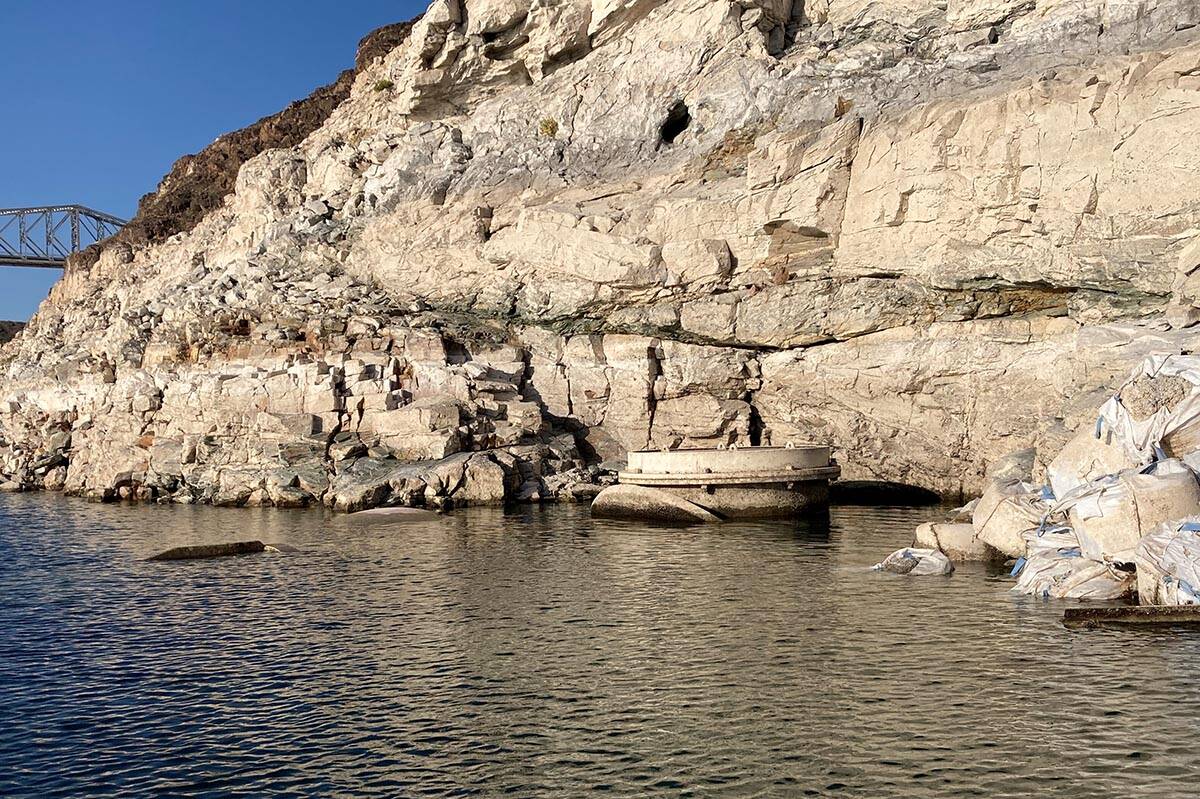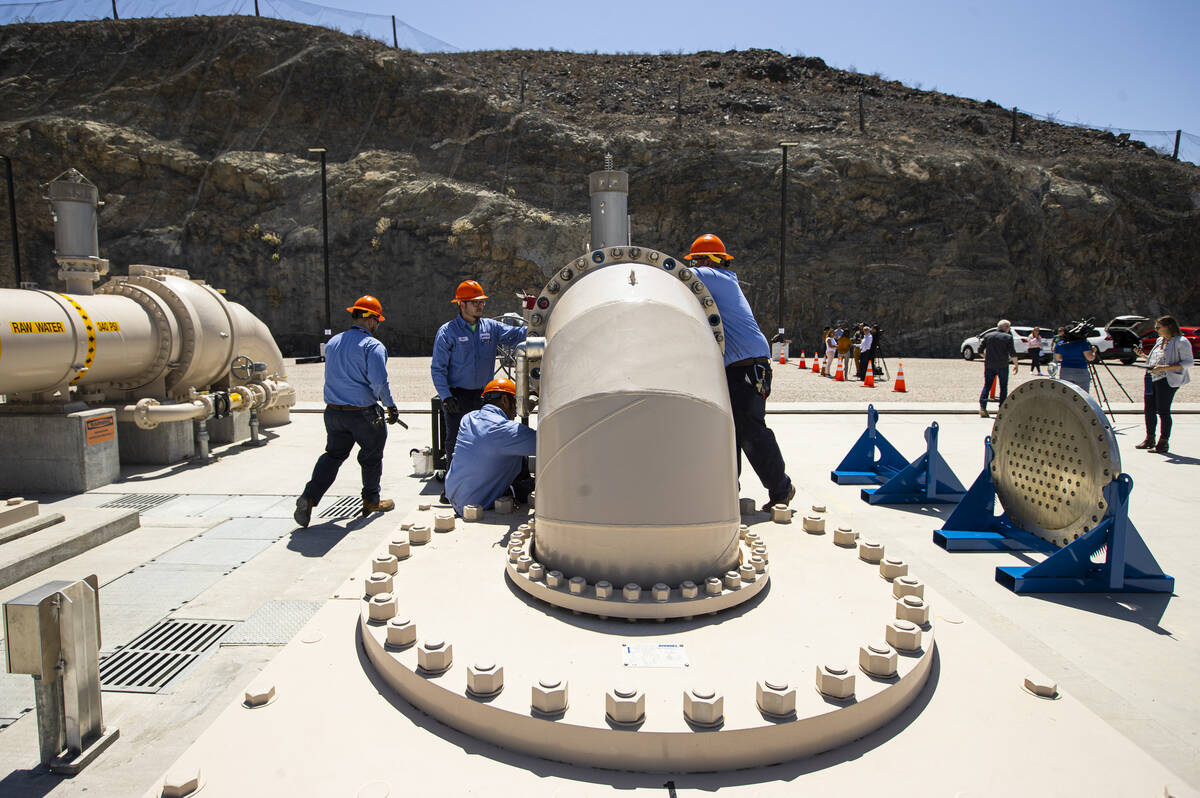Pumping station activated
The Southern Nevada Water Authority has put its low-lake-level pumping station into service to secure access to the water in Lake Mead as the level continues to drop but is still urging water conservation to preserve the supply.
“It’s the worst it’s ever been,” said Colby Pellegrino, deputy general manager of resources at the water authority. “We’re experiencing hydrologic conditions and reservoir storage levels that are lower than they’ve ever been except for when these facilities were initially being filled.”
On April 27, workers with SNWA made the authority’s low-lake-level pumping station operational after Lake Mead’s water level dropped far enough to expose the top of its highest-level intake straw for the first time in its history.
Water authority spokesperson Bronson Mack said this pumping station meets the water needs for the authority and secures Southern Nevada’s access to the supply.
“We’re the only one in the lower basin (of the Colorado River) that has this security. … We still have access to the water supply but conservation is still important,” he said.
Mack said conserving outdoor use is especially important because the water is not recycled and put back into Lake Mead. Other ways to conserve are following the seasonal watering restrictions, changing unused grass to water-efficient landscaping and finding and reporting water waste.
The pumping station was completed in April of 2020 at a cost of $522 million and built to ensure that water flows to the Las Vegas Valley even if the reservoir shrinks to 895 feet to its “dead pool.” At that point, Hoover Dam is unable to release water downstream.
The new pumping station has 34 pumps to bring in water from Lake Mead to the Alfred Merritt Smith Water Treatment Facility in Boulder City, according to Las Vegas Valley Water District Deputy General Manager of Engineering Doa Ross.
Currently, 22 of them are in use and the remaining 12 pumps will be turned on if the lake falls to an elevation of 1,010 feet.
Ross also said the two-year buffer the authority had with completing the pumping station and turning it on was almost “too close for comfort.”
“The fact that we’re here with this facility completed almost two years to the day before needing it is a testament to the forethought of this organization in this valley,” Ross said.
In January, the Bureau of Reclamation released its 24-month forecast that projected Lake Mead to drop 30 feet in the next two years, falling to 1,035.09 feet of water.
Las Vegas Review-Journal reporter Colton Lochhead contributed to this report.
Contact reporter Celia Shortt Goodyear at cgoodyear@bouldercityreview.com or at 702-586-9401. Follow her on Twitter @csgoodyear.

















